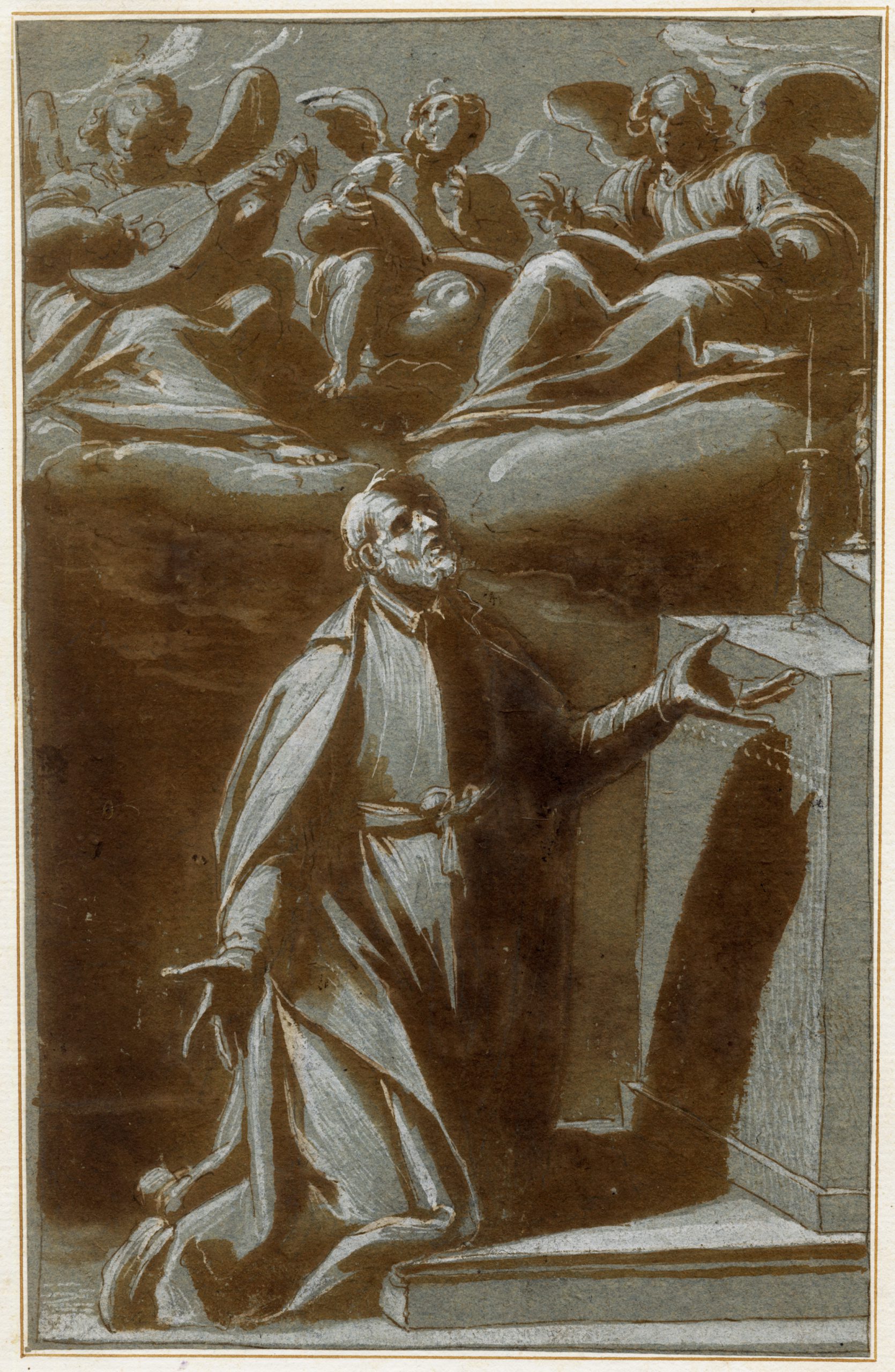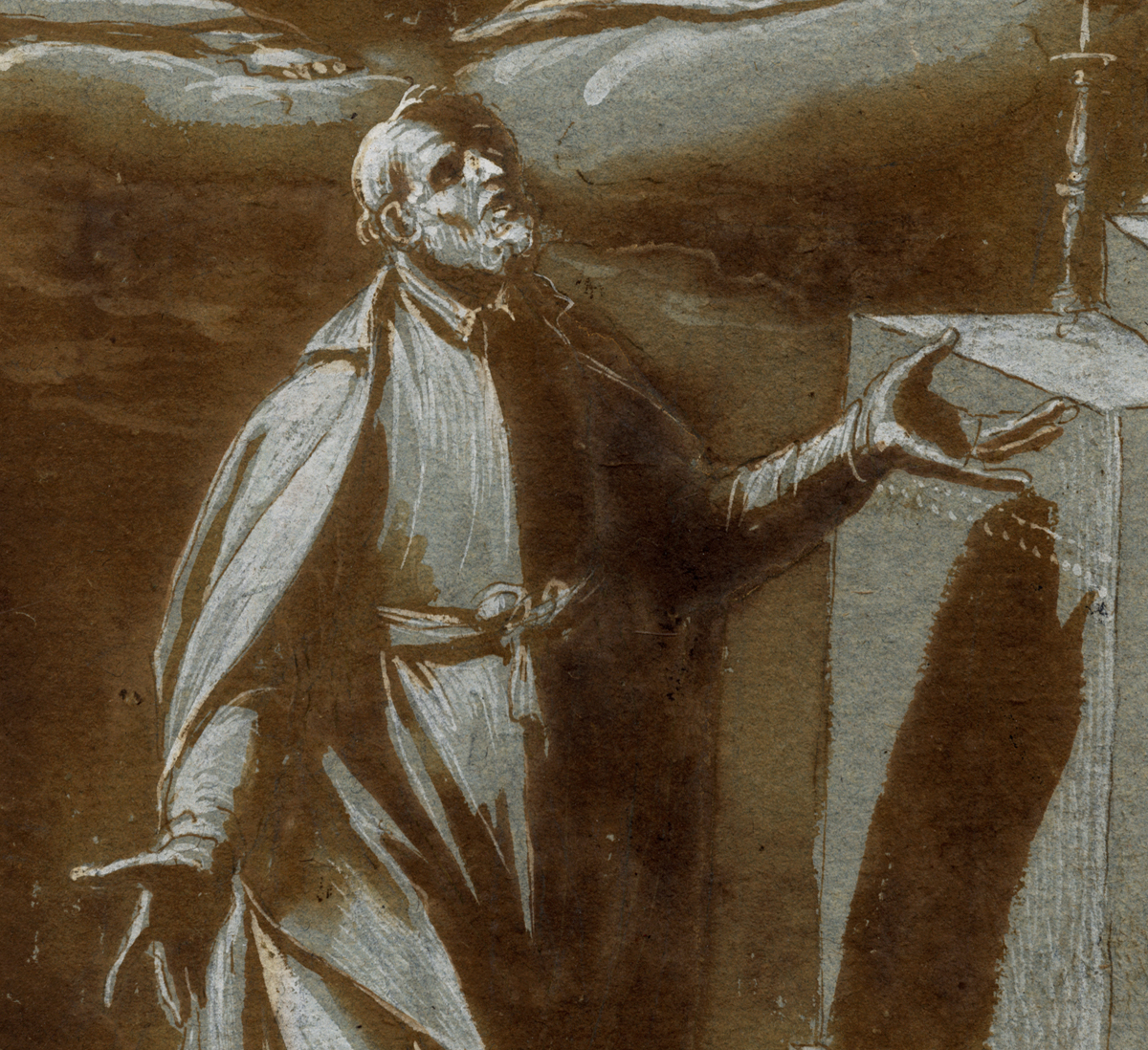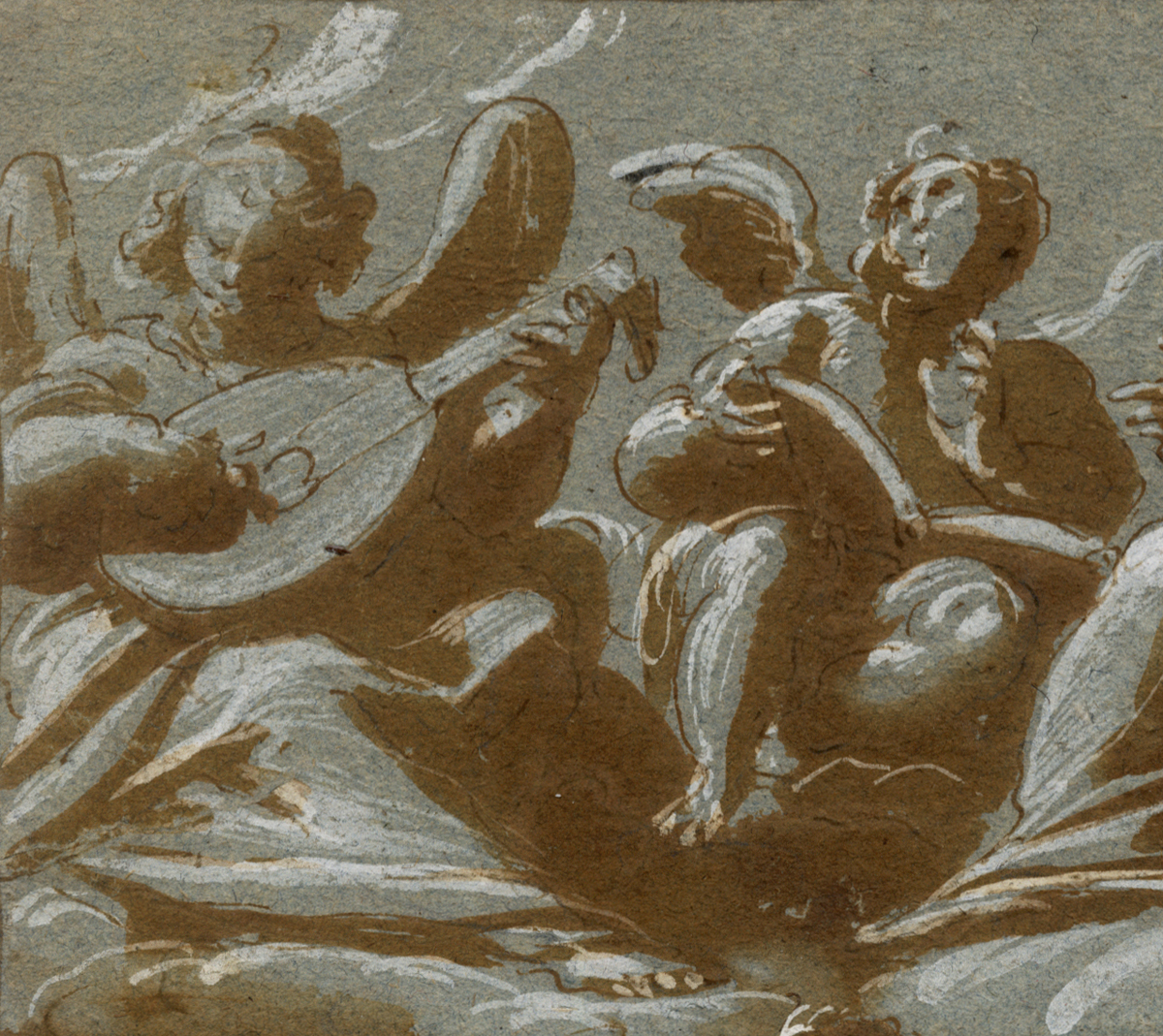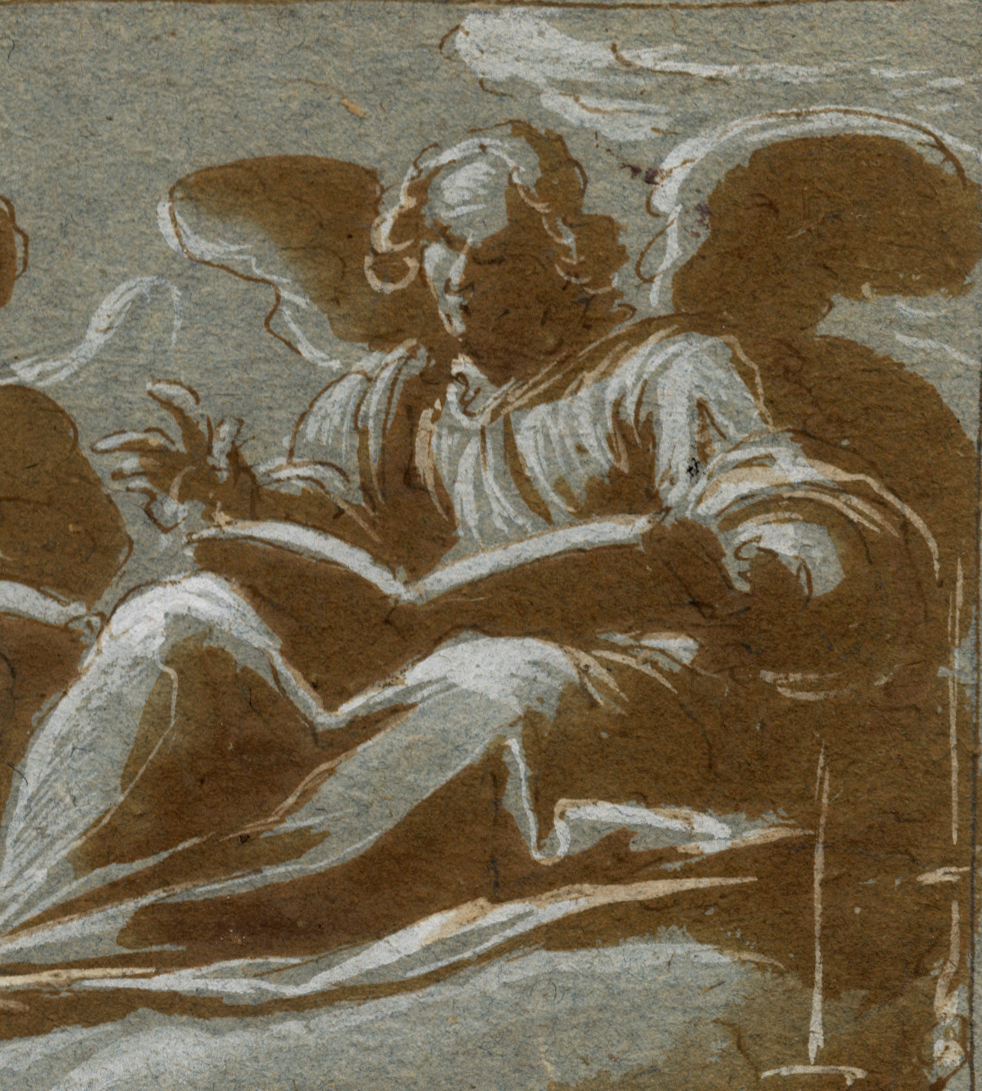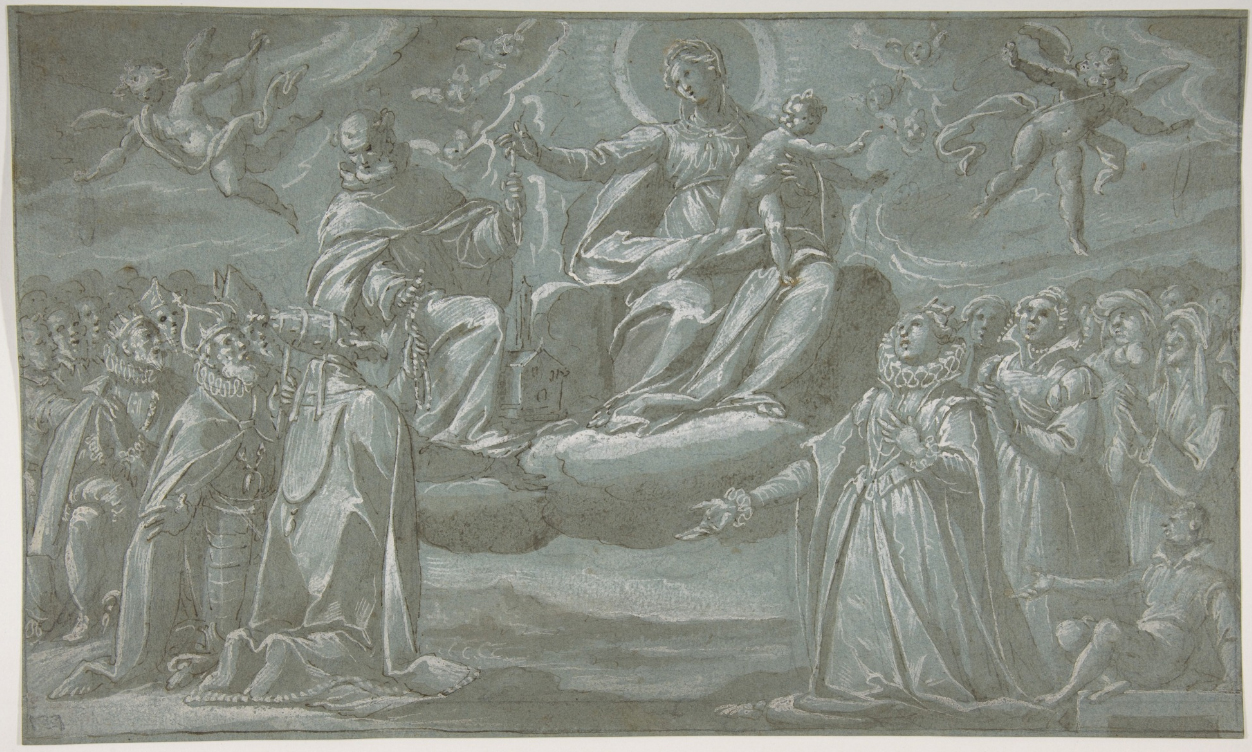GIOVANNI MAURO DELLA ROVERE, called FIAMMINGHINO (Milan c. 1575 – c. 1640 Milan)
Giovanni Mauro della Rovere, called Fiamminghino (Milan c. 1575 – c. 1640 Milan)
The Ecstacy of Saint Philippo Neri
Pen and brown ink, brown wash, heightened with white, framing lines in pen and brown ink, on blue paper, 279 x 176 mm (11 x 6.9 inch); laid down onto a 19th-century collector’s mount with framing lines in pen and brown ink
Provenance
~ Unidentified collector’s mount with inscription in pen and brown ink ‘Gio-Mauro Roveri / GB’ (?) on a piece of paper pasted to the verso of the mount
~ Ingeborg Tremmel, Munich
~ Jacques and Galila Hollander, Paris, until 2014
***
Giovanni Mauro della Rovere was called ‘Il Fiamminghino’ because his father was of Flemish origin.1 Giovanni Mauro and his older brother Giovanni Battista were pupils of Camillo Procaccini (1551–1629); they collaborated on such commissions as the fresco decorations in the Duomo of Milan and the churches of San Alessandro, San Marco and San Antonio dei Teatini. The artist was also actively decorating churches in Como, Pavia, Novara, Padua and Varese, in a Mannerist style which he retained well into the seventeenth century, right until the end of his career.
The present sheet with its lavish brown washes and heightening with white bodycolour on blue paper is characteristic of Mauro as a draughtsman, as are the figures with their typical round faces, wavy hair and hollow eyes. Some drawings by Mauro in this technique, from the collection of Padre Resta, are preserved in the Biblioteca Ambrosiana in Milan.2 Mauro’s compositions have been described as having the appearance of being frozen in action, and a similar feeling pervades our drawing.
The deeply emotional and religious influence of the Counter-Reformation is clearly recognizable in this sheet, and indeed the saint depicted, Philippo Neri (1515–1595), known as the ‘Apostle of Rome’, a mystic who founded the Congregation of the Oratory, is one of the leading figures of the Counter-Reformation period. He was canonized in 1622, which occassioned an increase in his popularity, and it could be speculated that this drawing was executed around this period.
Our drawing may be compared, both in handling, technique and iconography, to a sheet depicting The Virgin and Child, Saint Dominic and Angels Distributing Chaplets to the Faithful, preserved in the Metropolitan Museum, New York (fig.).3 A further related drawing in the same technique of the Virgin and Child with Sts Francis of Assisi and Dominic is in the Accademia Carrara, Bergamo.4
The attribution to has been confirmed by Professor Giulio Bora, to whom I am grateful.
SOLD
1. For the artist, see Guseppe Roccafranca Fusari, Il gran teatro barocco: i fiamminghini e i trionfi dei santi Faustini e Giovita, exh. cat. Brescia (Museo Diocesano di Brescia) 2010.
2. G. Bora, I disegni del Codice Resta, Bologna 1976, cat. nos 95-96, 156.
3. Pen and brown ink, brown wash, heightened with white, on blue paper, 225 x 378 mm; inv. no. 62.119.4. See Jacob Bean and Lawrence Turcic, 15th and 16th Century Italian Drawings in the Metropolitan Museum of Art, New York, 1982, cat. no. 231, repr.
4. Pen and brown ink, brown wash, heightened with white, on blue paper, 233 x 171 mm; exh. cat. Disegni dell’accademia Carrara di Bergamo, Venice 1962, cat. no. 116, repr.
